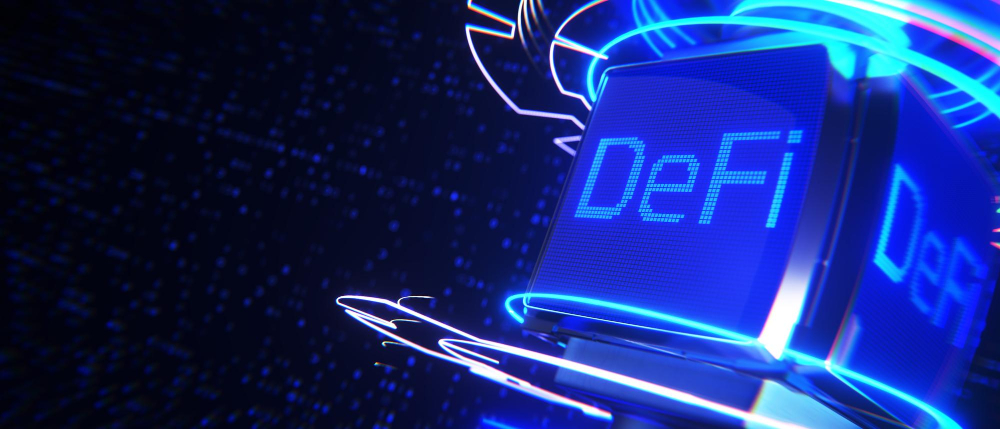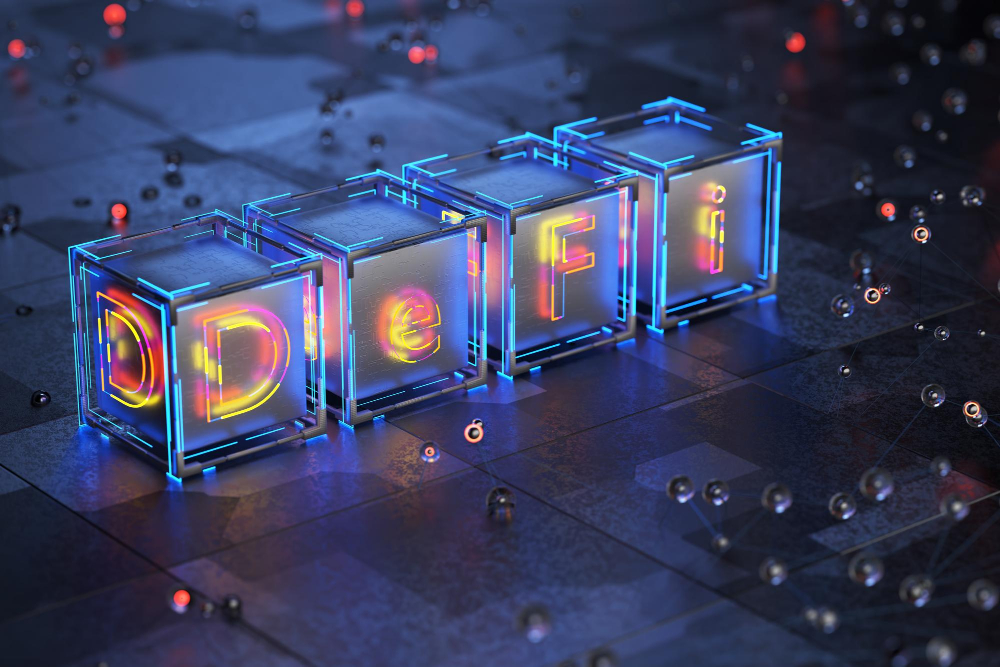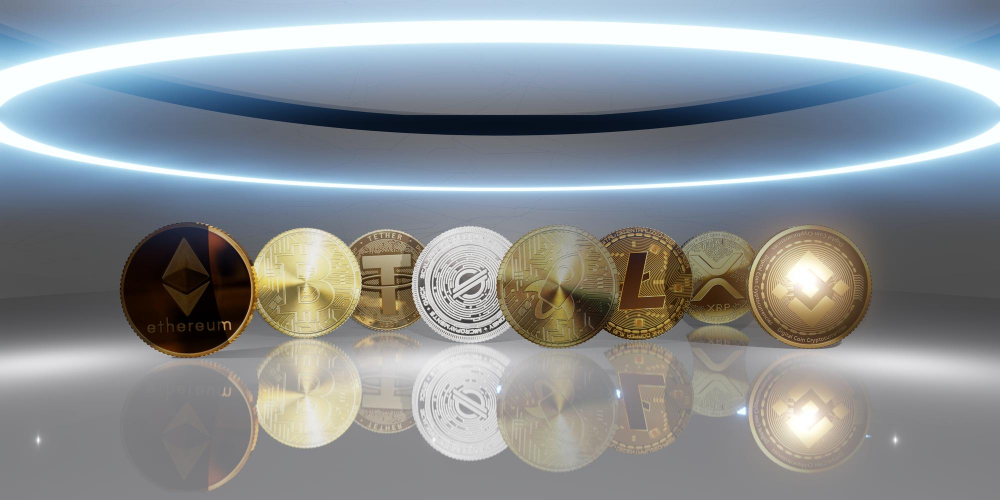DeFi 2.0 represents the next phase of development for decentralized finance, building upon the foundations laid by its predecessor. While DeFi 1.0 focused primarily on creating decentralized exchanges, lending protocols, and yield farming opportunities, DeFi 2.0 expands its horizons to address the limitations and challenges encountered along the way.
This guide focuses on what DeFi 2.0 means in practice for 2026: scalability, cross-chain liquidity, risk, and the wallet UX that makes it usable.

DeFi 2.0 refers to the second phase of development in the decentralized finance (DeFi) ecosystem. It represents an evolution beyond the initial wave of DeFi applications and protocols that gained prominence in recent years. While DeFi 1.0 focused on building the foundational infrastructure of decentralized exchanges, lending platforms, and yield farming, DeFi 2.0 expands the scope and capabilities of this ecosystem.
One of the key areas of advancement in DeFi 2.0 is scalability. DeFi 1.0 faced challenges with high gas fees and network congestion on blockchains like Ethereum. DeFi 2.0 aims to address these issues by implementing layer-two scaling solutions, such as sidechains and state channels. These solutions allow for increased transaction throughput and lower fees, enabling a more seamless and efficient user experience.
Interoperability is another crucial aspect of DeFi 2.0. In DeFi 1.0, most applications were built on a single blockchain, limiting interaction and liquidity across different platforms. DeFi 2.0 seeks to overcome this limitation by fostering interoperability between multiple blockchains. This can be achieved through cross-chain bridges, interoperability protocols, or the use of decentralized exchanges that support assets from various blockchains.
Furthermore, DeFi 2.0 aims to integrate real-world assets into the decentralized finance ecosystem. While DeFi 1.0 mainly dealt with purely digital assets, such as cryptocurrencies, DeFi 2.0 explores the tokenization of real-world assets like stocks, commodities, and real estate. This introduces a new level of accessibility and liquidity, allowing individuals to invest in traditional assets through decentralized platforms.
DeFi 2.0, with its ambitions for scalability, interoperability, and integration of real-world assets, brings forth several challenges and problems that need to be addressed for the ecosystem to flourish.
Liquidity is a critical aspect of any financial ecosystem, and DeFi 2.0 faces challenges related to liquidity fragmentation. With the expansion of various blockchains and protocols, liquidity is spread across different platforms, resulting in fragmented markets and limited price discovery. This fragmentation hampers efficient capital allocation and liquidity provision. Achieving cross-chain liquidity and interoperability is crucial to mitigate this problem, enabling the seamless movement of assets and fostering a more liquid DeFi ecosystem.
Scalability remains a key challenge in DeFi 2.0. While layer-two solutions hold promise in addressing scalability concerns, implementing and adopting these solutions across different platforms is a complex task. Seamless transition of assets between layer-one and layer-two solutions requires careful coordination and widespread adoption, which may take time to achieve. Ensuring high transaction throughput, low fees, and fast confirmation times are essential to deliver a smooth and scalable experience for users.
Oracles play a vital role in DeFi by providing external data feeds to smart contracts. However, ensuring the accuracy and security of oracle data is a significant challenge. Manipulation or compromise of oracle data can have severe consequences, leading to financial losses and system vulnerabilities. DeFi 2.0 needs robust oracle solutions that leverage multiple trusted data sources, implement data verification mechanisms, and utilize decentralized consensus algorithms to minimize the risk of data manipulation and improve the overall security of the ecosystem.
Centralization in DeFi can occur in various forms, such as the concentration of governance power, ownership of key infrastructure, and the influence of dominant protocols. Addressing centralization in DeFi 2.0 requires designing governance models that empower a diverse set of stakeholders, encourage decentralization of infrastructure, and foster interoperability between different platforms to prevent the dominance of a single protocol or blockchain.
Security is a paramount concern in DeFi 2.0. The integration of real-world assets, expanded functionalities, and the growing value locked in DeFi protocols make them attractive targets for malicious actors. DeFi 2.0 must prioritize robust security measures, including formal verification, comprehensive auditing processes, bug bounty programs, and improved smart contract standards. Enhancing the security infrastructure and fostering a culture of proactive vulnerability disclosure is essential to protect user funds and maintain trust in the ecosystem.
Liquidity mining, also known as yield farming, has its own challenges. Oversaturation of liquidity mining incentives can lead to market distortions, unsustainable yields, and the concentration of rewards in the hands of a few. DeFi 2.0 needs to strike a balance between incentivizing liquidity provision and ensuring the long-term sustainability of protocols. Introducing innovative and diversified incentive mechanisms, reducing reliance on excessive token distribution, and aligning incentives with the ecosystem’s long-term success are crucial considerations.

DeFi 1.0 and DeFi 2.0 represent different stages of development and evolution within the decentralized finance ecosystem, each with its own distinct characteristics and advancements. Understanding the differences between the two is crucial to grasp the trajectory and potential of this rapidly evolving space.
DeFi 1.0 primarily focused on establishing the foundational infrastructure of decentralized finance. It introduced concepts like decentralized exchanges (DEXs), lending and borrowing protocols, and yield farming. DeFi 1.0 platforms mainly operated on the Ethereum blockchain and predominantly dealt with digital assets like cryptocurrencies. While DeFi 1.0 brought about groundbreaking advancements in removing intermediaries, enabling peer-to-peer transactions, and providing access to financial services for a broader audience, it also faced challenges related to scalability, security, and regulatory compliance.
DeFi 2.0 represents the next stage of development, building upon the successes and learnings from DeFi 1.0. This phase began around the early 2020s and aims to address the limitations encountered in the earlier phase. Key differences in DeFi 2.0 include improved scalability through layer-two solutions, enhanced interoperability between multiple blockchains, and the integration of real-world assets into the DeFi ecosystem.
Scalability solutions like sidechains and state channels have been introduced to alleviate congestion and reduce gas fees. Cross-chain bridges and interoperability protocols facilitate the seamless movement of assets between different blockchain networks, increasing liquidity and access to various DeFi protocols. Moreover, DeFi 2.0 explores tokenizing real-world assets, such as stocks and real estate, bridging the gap between traditional finance and the decentralized world.
In summary, DeFi 1.0 served as the foundation of decentralized finance, pioneering crucial applications that demonstrated the potential of blockchain technology in finance. DeFi 2.0 builds on this foundation, introducing improvements in scalability, interoperability, and the integration of real-world assets.
In practice, DeFi 2.0 is experienced through a wallet. The biggest product shift in 2026 is making risk and outcomes visible before users sign transactions.
If you’re building a DeFi product and need wallet-native swaps, bridging, lending integrations, and safety UX, explore our DeFi wallet development services.

Olympus DAO is a protocol that introduces the concept of a “reserve currency” called OHM (Olympus). OHM is designed to be a decentralized store of value and a stablecoin alternative. The protocol utilizes a bonding mechanism, where users can bond their assets to receive OHM rewards. These rewards are generated through seigniorage, a process of expanding or contracting the OHM supply based on market demand.
Convex Finance is a protocol built on top of the Curve.fi stablecoin exchange platform. It focuses on optimizing yield generation for users who provide liquidity to Curve.fi and other protocols. Convex Finance enhances the rewards earned by users by utilizing strategies such as fee optimizations, governance participation, and yield optimization. By locking their liquidity provider (LP) tokens into Convex Finance, users can earn additional yield in the form of the platform’s native token, CVX.
Abracadabra.money is a protocol that combines yield farming and lending in a unique way. It offers users the ability to deposit stablecoins and to earn yield through the protocol’s yield aggregator strategy. Users can then borrow from the deposited value without affecting the yield generated. Abracadabra.money’s innovative approach provides a simplified and seamless experience for users to maximize their yield-generating potential.
In 2026, “DeFi 2.0” is less about a specific set of tokens and more about design patterns that make DeFi scalable, liquid, and safer to use across chains.
The practical takeaway: DeFi 2.0 is moving from “clever mechanics” to reliable infrastructure + safer UX that can serve mainstream financial products.

With innovative features and improved infrastructure, DeFi 2.0 introduces various investment avenues that can generate attractive returns.
Yield farming involves providing liquidity to decentralized protocols in exchange for rewards. Investors can lock their assets, such as stablecoins or cryptocurrencies, into liquidity pools and earn additional tokens as incentives. These rewards are often derived from platform fees, governance tokens, or newly minted tokens. Yield farming can be lucrative, but it also carries risks such as impermanent loss and smart contract vulnerabilities.
Staking tokens involves locking a specific cryptocurrency in a protocol to support network operations and secure the blockchain. In return for staking, investors receive rewards in the form of additional tokens or a share of transaction fees. Staking provides an opportunity to earn passive income while actively contributing to the decentralized network’s security and governance.
Decentralized exchanges (DEXs) enable users to trade cryptocurrencies directly from their wallets without relying on intermediaries. Investing in DeFi 2.0 can involve engaging in DEX trading, which offers benefits such as increased privacy, reduced transaction costs, and access to a wide range of token offerings. However, DEX trading carries risks associated with slippage, low liquidity, and potential smart contract vulnerabilities.
Liquidity mining involves providing liquidity to decentralized exchanges or liquidity pools and earning rewards in the form of tokens. By contributing to the liquidity of a particular market, investors can earn transaction fees and receive additional tokens as incentives. Liquidity mining can be an attractive investment strategy for those seeking to earn passive income while supporting the efficiency and liquidity of the DeFi ecosystem.
Investing in DeFi 2.0 also presents opportunities to lend cryptocurrencies and earn interest on the lent assets. Lending platforms connect borrowers and lenders, allowing individuals to lend their tokens in exchange for interest payments. This investment strategy can provide a predictable and steady income stream, although it carries risks such as borrower defaults or smart contract vulnerabilities.

DeFi 2.0 use cases exemplify the ongoing innovation within the decentralized finance space.
DeFi 2.0 introduces innovative solutions that enable users to unlock the value of their staked funds. Staking typically involves locking tokens in a protocol, restricting their liquidity. However, new protocols and platforms offer mechanisms that allow users to collateralize their staked assets and borrow against them, effectively unlocking liquidity without sacrificing the benefits of staking. This use case provides users with flexibility and the ability to access capital while still participating in staking activities.
Smart contract insurance is a critical use case in DeFi 2.0 that aims to protect users against the risks associated with smart contract vulnerabilities and potential hacks. Insurance protocols allow users to purchase coverage for their funds locked in smart contracts, providing a layer of protection in case of unforeseen events. These insurance solutions mitigate the financial risks faced by participants in the decentralized ecosystem, promoting trust and confidence in DeFi applications.
Impermanent loss insurance is specifically designed to address the risks associated with providing liquidity in automated market maker (AMM) pools. These insurance protocols provide coverage against impermanent losses incurred due to changes in the relative prices of the assets in a liquidity pool. By mitigating the potential downside of liquidity provision, this use case encourages more participants to contribute liquidity and enhances the overall efficiency of AMMs.
Flash loans allow users to borrow liquidity within a single transaction, as long as the funds are repaid before the transaction ends. They’re used for arbitrage, refinancing, and complex DeFi operations, but they also increase the importance of security and transaction simulation.
Cross-chain liquidity is a crucial use case in DeFi 2.0 that aims to overcome the challenges associated with interoperability between different blockchain networks. Through bridging mechanisms and protocols, users can seamlessly transfer assets across multiple blockchains, unlocking new opportunities for liquidity provision, decentralized trading, and other financial activities. This use case facilitates the integration of various blockchain ecosystems, enhancing liquidity and expanding the reach of DeFi.

Instead of focusing on “top tokens,” a more useful 2026 lens is to track the infrastructure and primitives that make DeFi faster, safer, and easier to use at scale.
More DeFi activity is moving to L2s and specialized environments to lower fees and improve execution. For product teams, this shifts the focus to bridging UX, liquidity routing, and multi-chain support.
Stablecoins remain the base asset for swaps, lending, and on-chain settlement. What matters most is liquidity depth, redemption/issuer risk, and clear user disclosures.
Cross-chain flows are still a major UX and security risk area. Expect continued focus on better proofs, safer bridge designs, and clear status tracking for users.
Better risk modeling is becoming a competitive advantage: safer parameters, more robust data feeds, and more visible risk cues for users (like liquidation buffers and scenario explanations).
Most users don’t experience DeFi through protocol UIs — they experience it through a wallet. In 2026, the winning products focus on transaction previews, approval safety, and cross-chain reliability to reduce user mistakes.

The future of DeFi 2.0 holds immense potential for further innovation and growth in the decentralized finance space. As the industry continues to mature, we can expect several developments.
First, we anticipate the expansion of interoperability between different blockchain networks, allowing for seamless cross-chain transactions and liquidity. This will enhance accessibility and open up new possibilities for users and investors.
Additionally, advancements in scalability solutions and layer 2 technologies will address the current limitations of high transaction fees and network congestion, making DeFi more efficient and user-friendly. Improved user interfaces and enhanced security measures will also contribute to a more seamless and secure DeFi experience.
Furthermore, the emergence of decentralized identity solutions and regulatory frameworks specific to DeFi will promote mainstream adoption and trust among traditional financial institutions and users. We can also expect the introduction of innovative financial instruments, such as tokenized assets and decentralized derivatives, expanding the range of investment opportunities within the DeFi ecosystem.
DeFi 2.0 represents the evolution of decentralized finance, pushing the boundaries of innovation, scalability, and user experience. With the introduction of new protocols, tokens, and use cases, DeFi 2.0 is poised to revolutionize the financial landscape by offering more advanced solutions and opportunities for individuals to participate in a decentralized economy.
With its transformative capabilities, DeFi 2.0 has the power to democratize finance, enhance financial inclusion, and reshape the global economy. As we embrace this exciting future, let us work together to unlock the full potential of DeFi 2.0 and usher in a new era of financial empowerment.
If you are ready to make a significant impact in the DeFi 2.0 space with your groundbreaking solution, ND Labs can offer comprehensive support. Our seasoned blockchain developers are equipped to assist you in creating a highly secure, scalable, and resilient DeFi 2.0 platform that will captivate users and surpass your competition. From refining your smart contracts to crafting cutting-edge protocols and establishing a robust architecture, we have the expertise to bring your vision to life. At ND Labs, we are committed to delivering exceptional solutions in the decentralized finance realm.